Fun Learning Activities 6-7 Year Olds: Best Indoor Engaging Ideas
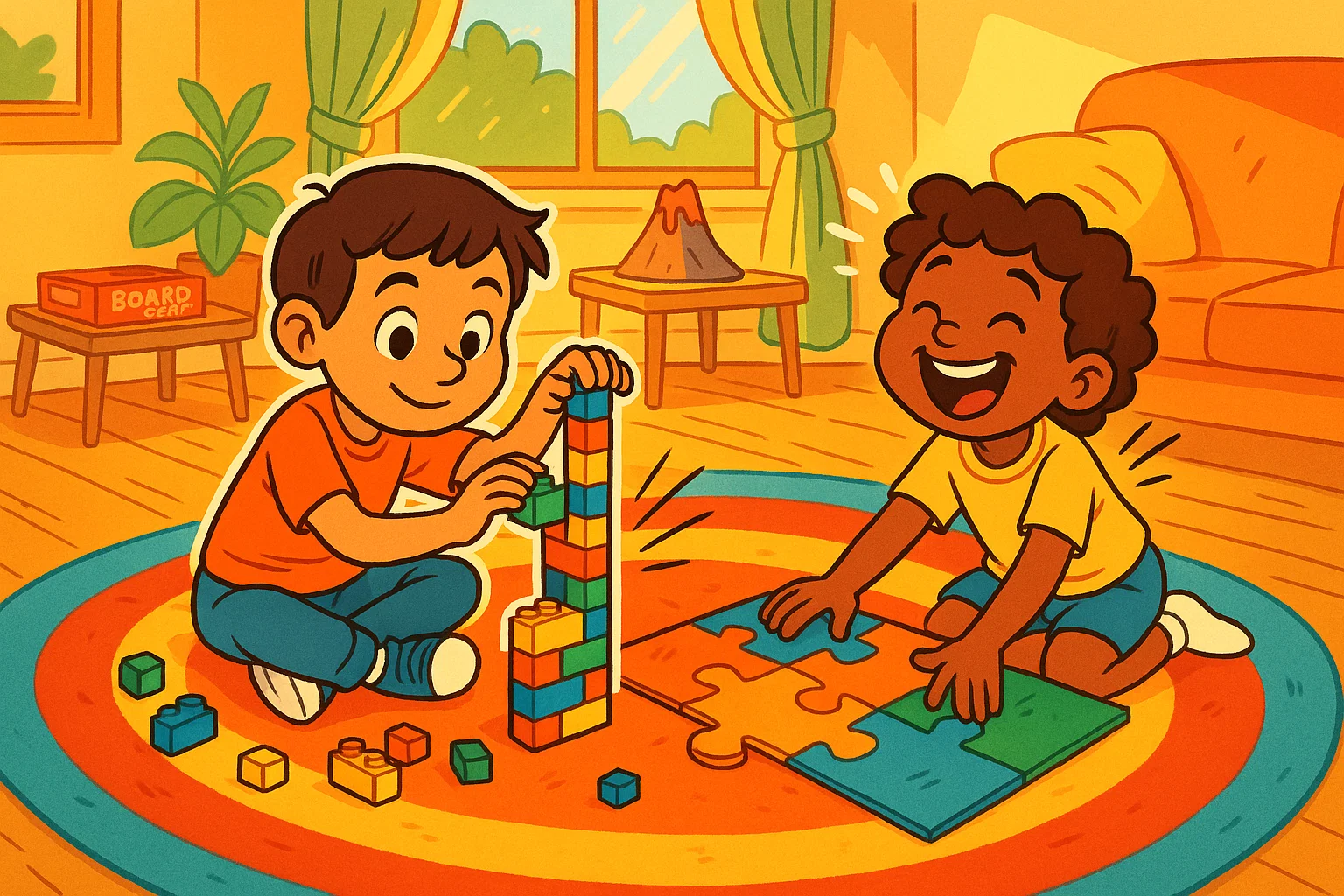
Finding engaging activities that blend fun with learning can transform your child’s daily routine. At ages six and seven, children develop rapidly across cognitive, physical, and social domains. The right mix of games and activities provides essential practice while keeping young minds curious and motivated.
This guide explores practical ways to help your little ones thrive through screen-free play, creative projects, and problem-solving challenges. Whether you’re stuck indoors on a rainy day or simply looking for structured quiet-time options, these activity ideas support motor skill development, critical thinking, and imaginative play.
Why Activities Matter For Year Olds
The experiences children have between ages six and seven shape their approach to learning for years to come. During this period, kids learn best through hands-on exploration rather than passive instruction. Activities that combine movement, creativity, and cognitive challenge help children develop a strong foundation across multiple skill areas.
Developmental Milestones: What To Expect From 6-7 Year Olds
At this age, children typically demonstrate significant growth in several key areas. Most 6-year-olds show these developmental markers:
- Follow multi-step instructions with 3-4 steps
- Recognize 200-300 sight words
- Solve basic math problems involving addition and subtraction within 20
- Write complete sentences, though letter formation may still be developing
- Understand perspective-taking and engage in cooperative games with more complex rules
- Show increased independence in self-care tasks
- Demonstrate improved balance, hand-eye coordination, and ability to participate in organized sports
By age seven, many children read simple chapter books independently, handle money concepts, and demonstrate logical thinking about cause and effect. Their attention span extends to 20-30 minutes for activities that genuinely interest them, making this an excellent time to introduce projects that require sustained focus.
Importance Of Play: Learning Through Fun
Play serves as the primary mechanism through which children process information and practice new skills. When kids enjoy an activity, their brains release dopamine, which enhances memory formation and motivation to persist through challenges. This neurological response explains why fun learning activities often produce better outcomes than rote practice.
Research posted on ResearchGate suggests that children who learn through play develop stronger problem-solving abilities and more flexible thinking patterns. A science experiment conducted at home, for instance, teaches scientific method while also building patience, observation skills, and healthy responses to unexpected results. Similarly, board games naturally reinforce numeracy, strategic thinking, and social skills without feeling like formal instruction.
The educational activities most effective for this age group share common characteristics: they offer appropriate challenge levels, provide immediate feedback, and connect to children’s existing interests. When you introduce your child to new concepts through playful exploration, they’re more likely to develop genuine curiosity rather than viewing learning as an obligation.
How To Keep Play Stress-Free
Creating a low-pressure environment helps kids stay engaged and builds positive associations with learning. Consider these approaches:
- Follow your child’s lead – Observe which activities naturally capture their attention and build from there
- Set realistic expectations – Accept that mess is part of the creative process
- Allow natural consequences – Let children work through challenges before offering solutions
- Ask guiding questions – Instead of providing answers, try “What have you tried so far?” or “Which pieces might fit in the corners?”
- Celebrate effort over outcome – Focus on the learning process rather than perfect results
This approach helps develop persistence and independent problem-solving skills while keeping activities enjoyable.
Academic Learning Activities And Skills
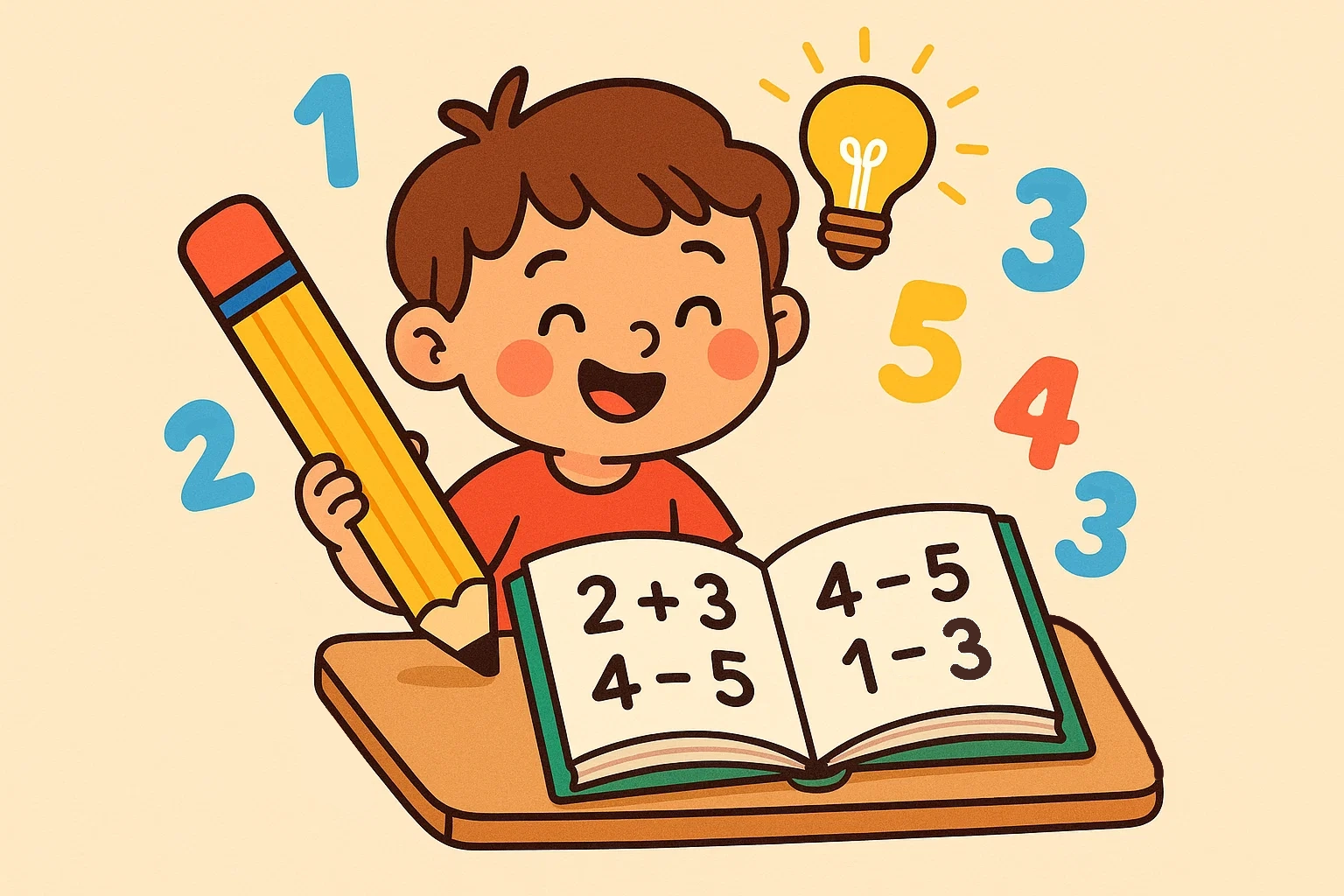
Strengthening foundational academic abilities doesn’t require expensive programs or rigid schedules. Simple, consistent practice through games and activities builds competence while maintaining children’s natural enthusiasm for discovering how things work.
Reading: Phonics And Word Recognition
At ages six and seven, most children transition from learning to read toward reading to learn. Phonics instruction remains important, particularly for decoding unfamiliar words. Try these engaging reading activities:
- Word-building games with magnetic letters or letter tiles
- Turn-taking reading where you model expression while your child practices fluency
- Word hunt adventures searching for high-frequency words in magazines or store circulars
- Label household items with sticky notes to reinforce sight vocabulary
- “I Spy” with phonics using beginning letter sounds during everyday moments
Choose reading materials slightly above their independent level to introduce new vocabulary in context while maintaining their interest and motivation.
Writing: Handwriting And Fine Motor Skills
Developing legible handwriting requires significant fine motor control that continues maturing throughout these years. Encourage your child to practice through meaningful activities rather than isolated drill sheets. Writing shopping lists, thank-you notes to relatives, or simple journal entries gives purpose to their efforts.
Strengthening the small muscles in hands and fingers supports better pencil control through activities like:
- Threading beads onto string
- Creating shapes with pipe cleaners
- Manipulating small LEGO bricks
- Tearing paper for collage projects
- Using a hole punch on paper
For children who resist traditional writing practice, try alternative approaches. Let your child dictate stories while you write them down, then have them copy a favorite sentence. Use sidewalk chalk to practice letters on a large scale, or fill a bin with sand where they can “write” with their fingers. Googly eyes and other craft materials can transform letter practice into art projects.
Solving Math Problems: Games, Fraction Walls, And Math Puzzles
Mathematical thinking develops through pattern recognition, spatial reasoning, and number sense rather than memorization alone. Board games provide natural opportunities to practice counting, basic operations, and strategic thinking. Games involving dice help kids learn addition facts through repeated, low-pressure exposure.
Create a simple fraction wall using construction paper to help your child visualize how parts relate to wholes. Cut strips of paper into halves, thirds, and fourths, then compare them side by side. This concrete representation makes abstract concepts more accessible. Similarly, use egg carton math for sorting and grouping activities—fill each compartment with small objects to practice counting by twos, fives, or tens.
Math puzzles that involve logic rather than computation build critical thinking alongside numeracy. KenKen puzzles, tangrams, or “what comes next?” pattern games challenge kids to think systematically. Even creating patterns with LEGO bricks or colored blocks reinforces mathematical reasoning while feeling like creative play.
Learning A New Language: Vocabulary And Grammar Games
Introducing language learning at this age capitalizes on children’s natural facility with sound patterns and grammar structures. Start with vocabulary related to your child’s interests—if they love animals, learn animal names in another language first. This connection to existing knowledge creates stronger memory formation.
Games make language practice engaging rather than tedious. Play “Simon Says” using commands in your target language, or create flashcards for a matching game with words and pictures. Singing simple songs provides repetition in an enjoyable format while helping kids internalize pronunciation and sentence structures.
Label household items with words in both English and your target language. Point out these labels during daily routines, creating casual exposure without formal study sessions. Reading bilingual picture books together shows how languages relate while building vocabulary in context.
Creative Science And Exploration
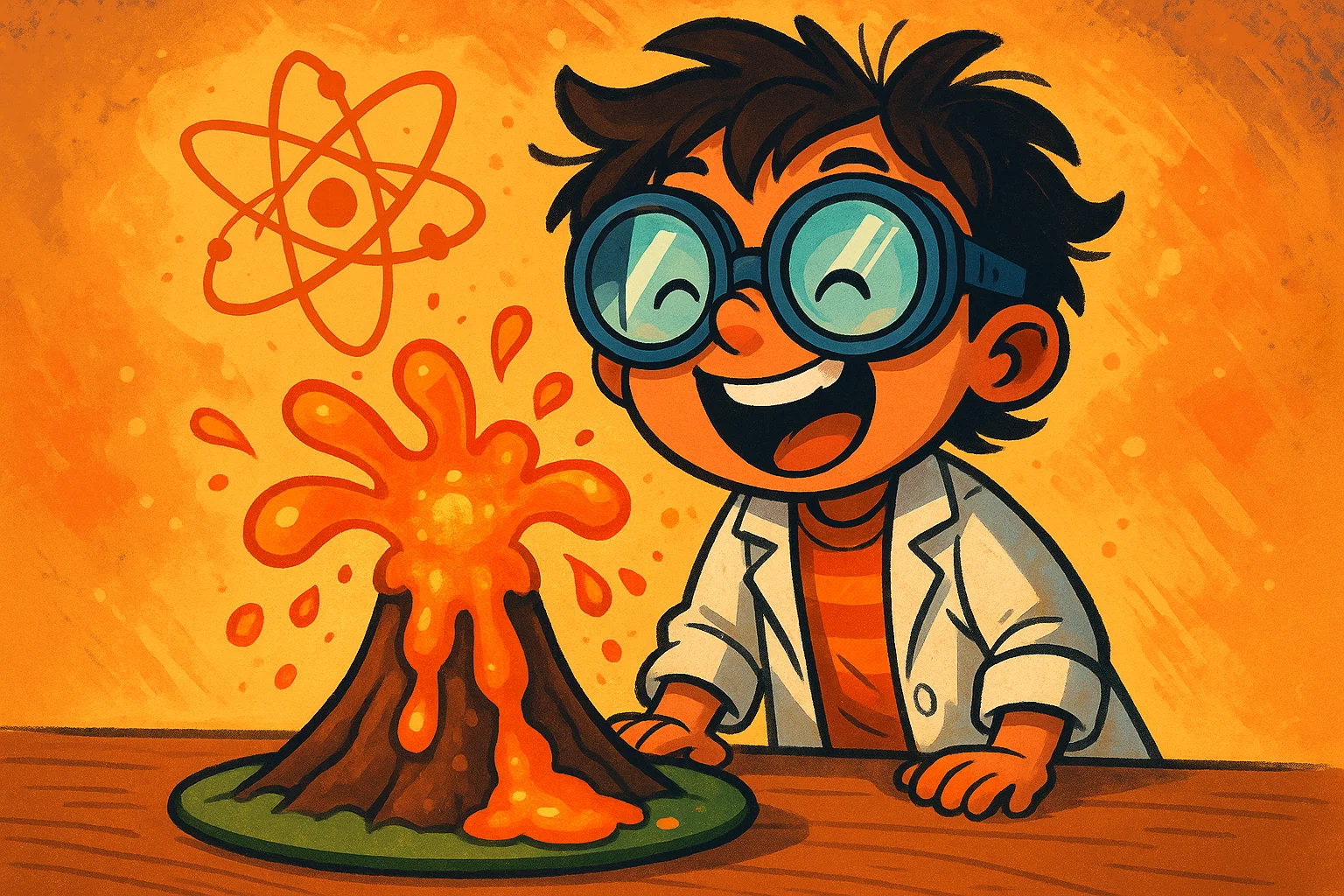
Hands-on discovery activities satisfy children’s natural curiosity while building scientific thinking skills. At this age, kids can follow multi-step procedures, make predictions, and understand cause-and-effect relationships.
Fostering Creative Expression Through Art: Painting, Clay, And Drawing
Art activities develop more than creative skills—they strengthen hand-eye coordination, spatial reasoning, and the ability to plan and execute multi-step projects. Provide open-ended materials and minimal direction to encourage genuine exploration. A simple setup with paint, paper, and various tools (sponges, cotton swabs, toothbrushes) invites experimentation.
Working with clay or homemade playdough builds significant fine motor strength while allowing three-dimensional creation. Ask your child to construct something specific, like their favorite animal or an imaginary creature, which adds a problem-solving element to the activity. The challenge of figuring out how to make structures stand or attach parts requires both planning and persistence.
Drawing from observation teaches careful looking and patience. Set up a simple still life with a few objects and encourage your child to study shapes, proportions, and details. This activity strengthens visual processing skills that support reading development while offering creative satisfaction.
Conducting Science Experiments: Simple STEAM Activities
Science experiments designed for young children demonstrate fundamental principles through immediate, visible results. Creating a baking soda and vinegar volcano remains popular because the reaction is dramatic and safe. Extend the learning by asking your child what they think will happen if you change proportions or add food coloring.
Growing plants from seeds teaches biology and patience simultaneously. Let your child maintain a small garden or even sprout beans in a damp paper towel inside a clear bag. Daily observation and simple record-keeping (drawing pictures of changes) reinforces the scientific method. Discussing what plants need to grow introduces concepts about living things.
Making homemade slime combines chemistry with sensory play. Following a recipe builds reading comprehension and measurement skills, while the gooey result provides lots of fun. Talk about why mixing certain ingredients creates different textures, which plants early seeds for understanding chemical reactions.
A marble run construction project merges physics with engineering. Whether using commercial marble run sets or creating tracks with cardboard tubes and tape, kids learn about gravity, momentum, and problem-solving. Challenge your child to build a track that includes three turns or reaches a specific target.
Learning A Musical Instrument: Rhythm And Notes
Music education supports cognitive development, particularly in areas related to pattern recognition and sequential processing. Beginning instruction on piano, violin, or another instrument introduces note reading and rhythm concepts that strengthen mathematical thinking.
Even before formal lessons, kids enjoy music through rhythm games and activities. Clapping patterns or using homemade percussion instruments (rice in sealed containers, wooden spoons on pots) builds foundational timing skills. Ask your child to echo patterns you create, then let them invent patterns for you to follow.
Singing remains one of the most accessible musical activities. Learn songs with simple melodies and clear rhythms. Many children’s songs include counting or alphabet content, making them fun for kids while reinforcing academic concepts. Creating new verses to familiar melodies encourages creativity and language play.
Cooking And Baking: Making Homemade Treats And Practical Math
Kitchen activities offer remarkably rich learning opportunities. Following recipes requires reading comprehension, sequencing, and measurement—all practical math applications. When you make homemade cookies or prepare simple meals together, your child practices fractions (half a cup), counting, and even chemistry (how heat changes ingredients).
Let your child take ownership of appropriate tasks like stirring, measuring, or decorating. This involvement builds confidence and independence alongside specific skills. Discuss what’s happening as you cook: “The butter is melting because the heat makes the solid fat turn liquid” introduces scientific vocabulary in meaningful context.
Safety awareness develops through supervised practice. Teaching proper knife techniques with a child-safe cutter or showing how to work carefully around hot surfaces prepares kids for increased responsibility. The pride they feel when family members enjoy something they helped create motivates continued learning.
Physical Games And Activities
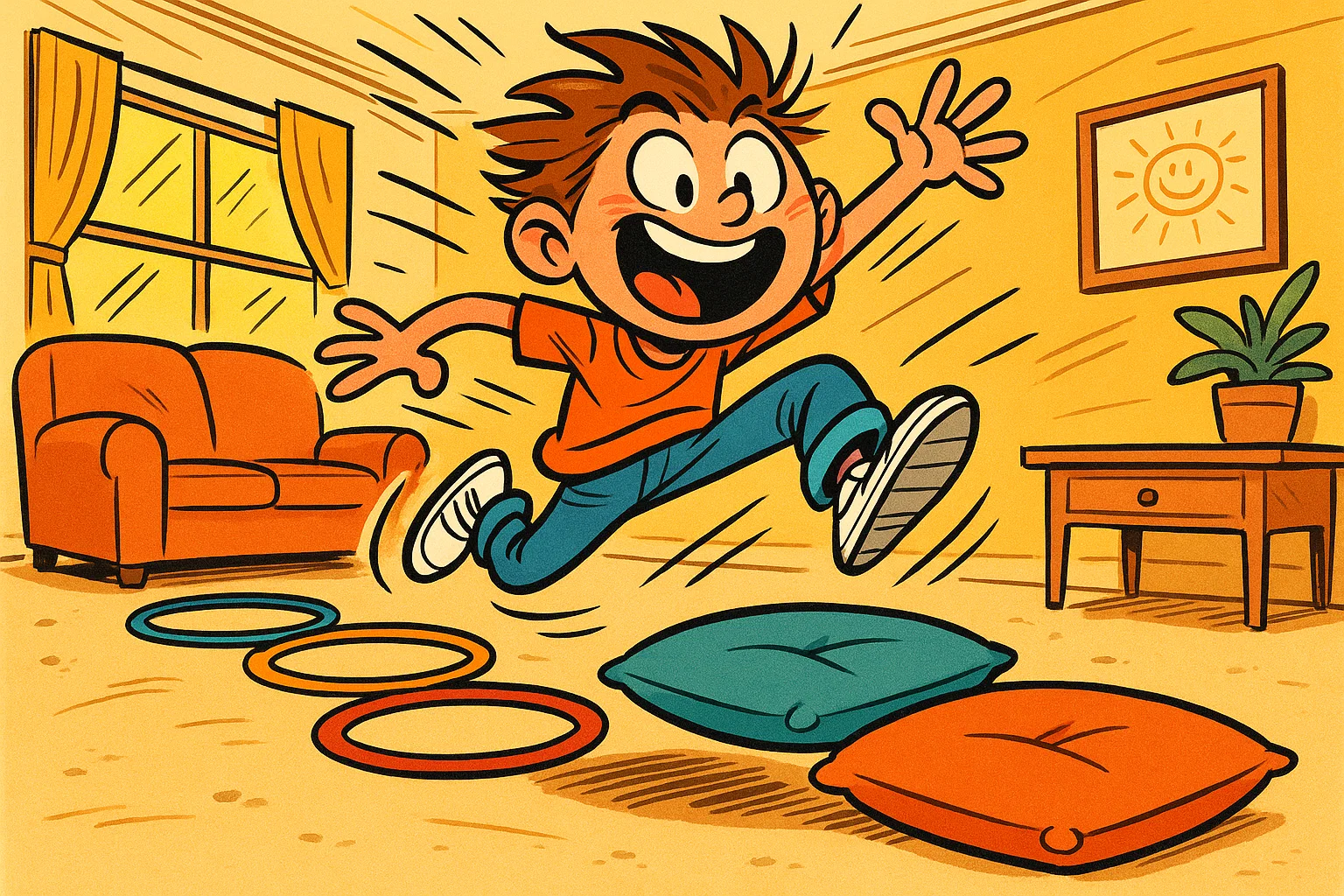
Movement activities support not just physical health but also cognitive function. Active play increases blood flow to the brain, improves mood, and helps kids regulate energy levels throughout the day.
Participating In Organized Sports: Teamwork And Motor Skills
Structured sports programs introduce children to rule-following, team cooperation, and healthy competition. Popular options for this age include:
- Soccer – Builds cardiovascular fitness and team coordination
- Swimming – Develops full-body strength and water safety
- Gymnastics – Enhances flexibility, balance, and body awareness
- Martial arts – Teaches discipline, focus, and self-control
- Baseball/softball – Improves hand-eye coordination and strategic thinking
Not every child gravitates toward competitive team sports, and that’s perfectly fine. Individual activities like swimming or martial arts still provide physical challenge and skill development without the team dynamics some children find stressful. Focus on finding activities your child genuinely enjoys rather than pushing them toward sports they resist.
Organized sports also teach children how to handle both success and disappointment gracefully. Learning to congratulate teammates, accept coaching feedback, and persist after mistakes builds emotional resilience that extends beyond athletic contexts.
Indoor Obstacle Course: Burning Energy With Fun Indoor Activities
When weather or circumstances keep kids indoors, an obstacle course transforms living space into an active play area. Create stations using common household items:
- Crawl under tables or between chair legs
- Hop between taped spots on the floor
- Balance along a straight line of tape
- Toss beanbags at targets
- Stack cups at a designated station
- Weave around pillows or cushions
The planning phase offers cognitive benefits as well—invite your child to help design the course, which requires spatial reasoning and sequencing. Time their runs through the course and encourage them to beat their own records rather than competing against others, which builds intrinsic motivation.
Vary the challenges to target different physical skills. Include stations that require fine motor control (stacking cups), balance (walking heel-to-toe along a line), and coordination (bouncing a ball while moving). This variety makes the activity more engaging while providing comprehensive physical practice.
Outdoor Exploration: Nature Weaving And Seed Bombs
Time in nature supports both physical health and emotional well-being. Even a simple walk around the neighborhood becomes educational when you help your child notice seasonal changes, identify plants or birds, or collect interesting natural materials.
Nature weaving creates beautiful artwork from outdoor treasures. Find a forked stick and create a simple frame with yarn or string woven between the branches. During nature walks, collect leaves, flowers, grass, and feathers to weave into the frame. This activity combines fine motor practice with mindfulness and appreciation for natural beauty.
Making seed bombs turns gardening into a fun, slightly messy project. Mix clay soil, compost, and wildflower seeds into balls, then let them dry. Kids love tossing these into bare patches where they want flowers to grow, combining physical activity with environmental awareness. Growing plants from their seed bombs teaches responsibility and patience.
Action Games And Activities: Listening And Coordination
Traditional action games remain engaging because they combine physical challenge with cognitive demands. Here are three classics that never get old:
Simon Says requires careful listening and impulse control—children must process whether the command began with “Simon says” before acting. This game can adapt to any theme or learning goal (Simon says touch something blue, Simon says spell “cat”).
Freeze Dance builds body awareness and self-regulation. When the music stops, children must freeze in whatever position they held, which requires significant motor control and attention. Add variations like freezing in specific shapes or poses to increase the challenge.
Kim’s Game strengthens visual memory and attention to detail. Place several small objects on a tray and let your child study them for a minute. Cover the tray and remove one item, then ask what’s missing. This seemingly simple game provides excellent cognitive exercise while remaining accessible and fun for kids at this age level.
Social And Emotional Games Activities
Developing social competence and emotional regulation skills happens through practice in real situations. Games and activities that require cooperation, perspective-taking, and self-control build these crucial abilities.
Playing Teamwork Games: Cooperation And Sharing
Board games designed for cooperative play teach children to work toward common goals rather than competing. In these games, players win or lose together, which reduces conflict and highlights how individual contributions support group success. This experience helps develop empathy and appreciation for others’ efforts.
Building projects that require collaboration also strengthen teamwork skills. Challenge siblings or friends to construct something together using LEGO bricks, blocks, or craft materials. The negotiation required—whose idea to follow, how to solve problems, when to compromise—provides valuable social practice.
Group art projects create opportunities for sharing materials and ideas. A large mural where each child adds elements or a collective sculpture using recycled materials shows how individual work combines into something greater. Discussing the creative process afterward helps kids reflect on how cooperation functioned.
Engaging In Dramatic Play: Role-Playing And Storytelling
Imaginative play allows children to explore different perspectives and practice social scenarios in low-stakes contexts. Setting up areas for specific dramatic play themes—a store, restaurant, doctor’s office, or space station—gives structure while leaving room for creativity.
Provide simple props and costumes, but resist over-directing the play. Children develop problem-solving abilities and narrative skills by creating their own scenarios. When conflicts arise during dramatic play (disagreements about roles or storylines), give kids the opportunity to resolve issues themselves before intervening.
Puppets offer another avenue for storytelling and role-play. Children sometimes express ideas or emotions through puppet characters more easily than through direct conversation. Simple puppets made from socks, paper bags, or craft sticks work just as well as purchased ones for imaginative play purposes.
Practicing Mindfulness And Meditation: Emotional Intelligence
Basic mindfulness techniques help children recognize and manage their emotions more effectively. Try these age-appropriate practices:
- Breathing exercises – “Smell the flower, blow out the candle” (inhale deeply, exhale slowly)
- Body scan activities – Notice how each body part feels, progressing from toes to head
- Gratitude sharing – At bedtime or meals, discuss something good that happened
- Mindful listening – Close eyes and identify all the sounds you can hear
- Tension release – Squeeze muscles tight, then release and notice the difference
Practice these techniques during calm moments so they’re familiar when your child feels upset. This builds the ability to recognize tension or discomfort before emotions escalate.
Community Service: Helping Others
Age-appropriate volunteer activities teach empathy and community responsibility. Simple projects like making cards for nursing home residents, collecting food for a local pantry, or helping clean up a neighborhood park show children how their actions affect others positively.
Discuss why you’re engaging in service and how it helps. “Mrs. Johnson might feel lonely sometimes, so our card might make her smile” helps your child understand the impact of kindness. This connection between action and outcome builds the capacity to consider others’ perspectives.
Regular family service activities, even small ones, normalize helping as part of life rather than an exceptional event. Bringing a meal to a neighbor who’s been ill or helping an elderly relative with yard work demonstrates everyday compassion. Kids who grow up seeing service as normal develop stronger prosocial tendencies.
Brain Boosters: Logic And Puzzles
Activities that challenge logical thinking and problem-solving build cognitive flexibility and persistence. These skills transfer across academic subjects and life situations.
Exploring Board Games: Strategy And Fun For Year Olds
Board games designed for ages 6-7 typically introduce strategic thinking while maintaining engaging themes and manageable complexity. Games like “Sequence for Kids,” “Ticket to Ride: First Journey,” or “Outfoxed!” require planning ahead while being fun for kids to play.
The social aspects of playing games teach valuable lessons beyond the game mechanics themselves. Taking turns, following rules, handling both winning and losing gracefully—these experiences build emotional regulation and social competence. When your child wins, acknowledge their success; when they lose, discuss how they can try different strategies next time.
Strategy games specifically designed for developing mathematical thinking combine learning with entertainment. “Sum Swamp” practices addition and subtraction, while “Zeus on the Loose” builds mental math skills through game play. Because children stay engaged with the game itself, they practice math facts without the resistance they might show toward worksheets.
Exploring Puzzles And Brain Teasers: Concentration And Memory
Jigsaw puzzles strengthen visual-spatial reasoning, fine motor control, and persistence. At ages six and seven, most children can complete puzzles with 50-100 pieces independently, though preferences vary widely. Choose puzzles featuring subjects your child enjoys to maintain motivation through the sometimes frustrating middle stages.
Logic puzzles designed for this age range introduce systematic thinking:
- Picture Sudoku – Using images or colors instead of numbers
- Sliding block puzzles – Like “Rush Hour” for spatial planning
- Pattern completion – Identifying what comes next in a sequence
- Maze challenges – Finding paths from start to finish
- Spot the difference – Comparing two similar images
Brain teasers and riddles for kids strengthen creative thinking and verbal reasoning. Start with simple riddles that use familiar concepts: “What has hands but cannot clap?” (A clock). The mental flexibility required to think beyond literal interpretations builds cognitive elasticity useful across many contexts.
Building With LEGO: Construction Challenges
LEGO building combines spatial reasoning, fine motor practice, creativity, and persistence. Free building allows pure creative expression, while following instruction manuals develops the ability to interpret diagrams and complete multi-step procedures systematically.
Set specific building challenges to add problem-solving elements: “Build a bridge that spans this gap” or “Create a container that can hold these five marbles.” These open-ended challenges require planning, testing, and often rebuilding—the engineering design process in miniature. When structures fail, discuss what went wrong and how to strengthen the next attempt.
Incorporating storytelling with building projects deepens engagement. After constructing something, ask your child to create a story about it or act out scenes using minifigures. This combination of construction and narrative exercises different cognitive skills simultaneously.
DIY Sensory Bins: Fine Motor And Stimulation
Creating a sensory bin provides exploratory play that can be calming or energizing depending on the materials. Here’s how to build one:
Base materials (choose one):
- Dried beans or lentils
- Uncooked rice
- Kinetic sand
- Water beads
- Shredded paper
Add exploration items:
- Small toys to hide and find
- Measuring cups and spoons
- Tweezers or tongs for picking up objects
- Scoops and containers
- Theme-specific items (shells for ocean theme, toy vehicles for construction theme)
Theme sensory bins around learning concepts to add educational value. An ocean sensory bin might include blue water beads, toy sea creatures, and shells, supporting marine biology discussions. A construction sensory bin with kinetic sand, toy vehicles, and rocks allows imaginative building play while providing tactile stimulation.
Sensory experiences support emotional regulation for many children. Some kids find tactile play calming when they feel overwhelmed, while others engage with sensory materials when they need to focus excess energy. Observe how your child responds to different textures and sensations to create bins that meet their specific needs.
Best Indoor Activities And Quiet-Time Ideas
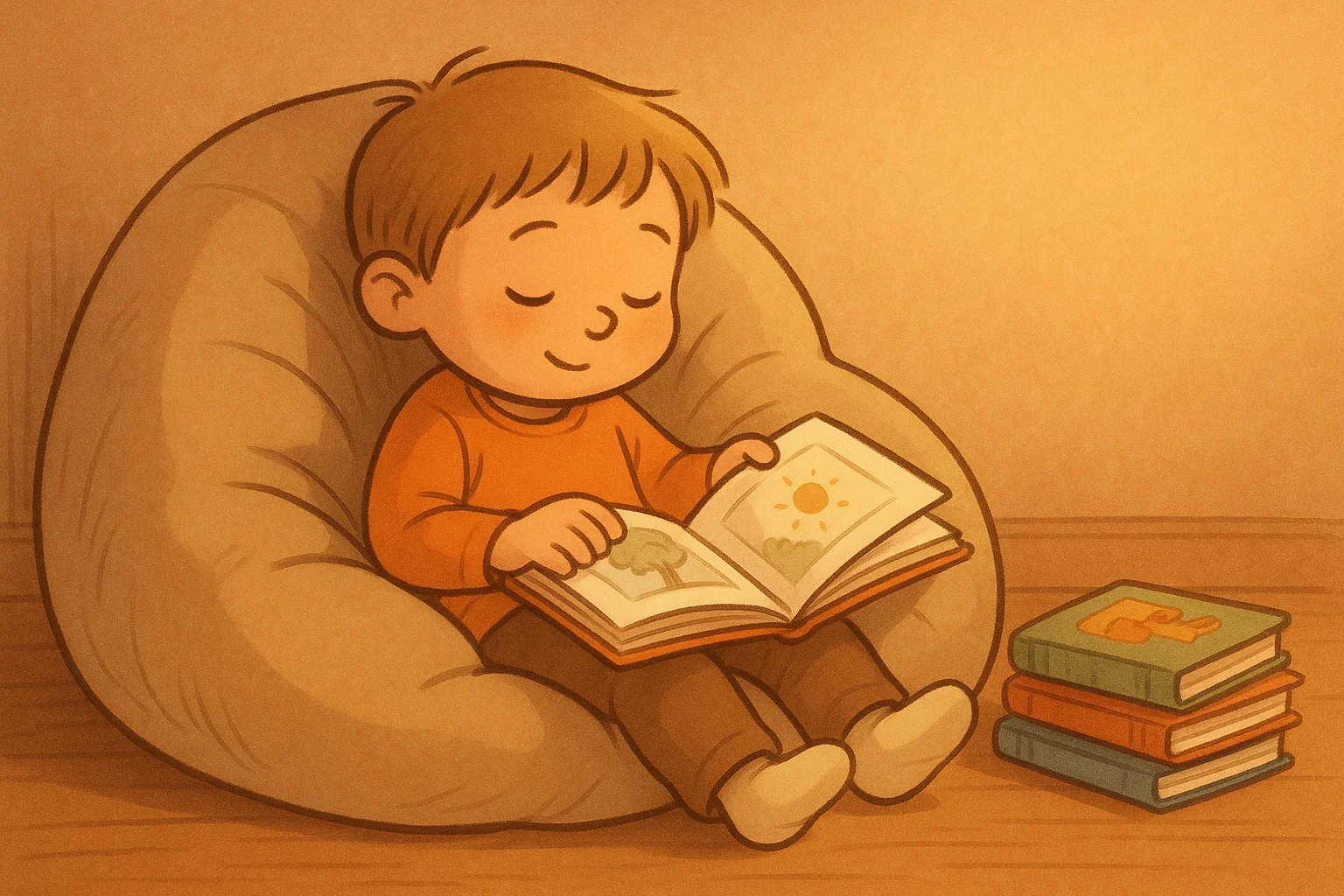
Creating downtime for rest and independent play helps children recharge while building self-direction skills. Quiet activities need not be entirely silent—the goal is sustained, focused engagement rather than high-energy play.
Quiet-Time Activities: Books, Drawing, And Cards
Reading independently or looking through books quietly occupies many children happily during rest periods. Create a cozy reading nook with pillows, adequate lighting, and a selection of books at various levels. Include picture books, early readers, and more challenging chapter books so your child can choose based on their current mood and energy.
Drawing and coloring require minimal setup while offering creative outlet and fine motor practice. Provide various materials: crayons, colored pencils, markers, and different types of paper. Open-ended drawing time where children create whatever they imagine often produces more engagement than coloring predetermined images, though some kids find coloring books pleasingly structured.
Card games suitable for solo play teach patience and strategy. Simple solitaire variations designed for children, memory matching games, or building card houses all provide engaging quiet activities. Even sorting cards by suit or number reinforces categorization skills while remaining calm and focused.
Easy Indoor Crafts: Art Projects For Year Olds
Simple craft projects suitable for independent work give kids creative control while developing planning and execution skills. Try these engaging options:
Collage Creation Use magazines, construction paper, scissors, and glue sticks. Children can create specific subjects or abstract designs based on their preferences.
Paper Folding (Origami) Start with very simple designs—a paper airplane or basic boat—then gradually introduce more complex folds as skills develop. The finished products become toys for imaginative play.
Bead Jewelry String large pony beads onto pipe cleaners or thick cord to make bracelets or necklaces. Creating specific color patterns or alternating different bead shapes adds a mathematical element to the creative process.
Each project builds fine motor skills, planning abilities, and creative confidence while remaining accessible for independent completion.
Making Homemade Modeling Dough: Simple Fun
Creating homemade playdough provides both the process (mixing and kneading) and the product (dough for sculpting). Basic recipes require only flour, salt, water, and oil, with optional food coloring. Let your child help measure and mix ingredients, which reinforces following instructions and basic chemistry concepts.
Working with playdough builds hand strength and bilateral coordination. Rolling, pinching, cutting, and molding all develop the fine motor skills needed for writing and other precise hand movements. Add tools like cookie cutters, plastic knives, rolling pins, or stamps to expand the creative possibilities.
Challenge your child to create specific items from playdough: “Make something you saw outside today” or “Build an animal that lives in water.” These directed activities add problem-solving to the sensory experience. Creating detailed sculptures requires planning how to attach parts and balance structures—valuable engineering thinking.
Story Cards And Word Games
Story cards featuring single images inspire narrative creation. Show your child a card and ask them to tell you what’s happening, who the characters are, and what might happen next. This activity builds verbal skills, sequencing, and imagination without requiring materials beyond the cards themselves.
Create your own story cards by cutting pictures from magazines and gluing them to index cards. Having your child help make the cards adds another layer of engagement. Use the completed set for various games: arrange cards to create story sequences, sort by category, or draw cards randomly to build improvised tales.
Word games playable without special materials keep kids engaged and build vocabulary. “20 Questions” teaches deductive reasoning and questioning strategies. “I’m thinking of a word that rhymes with…” supports phonics awareness. “Category game” where participants name items in a specific category (animals, foods, things that are red) expands vocabulary and flexible thinking.
